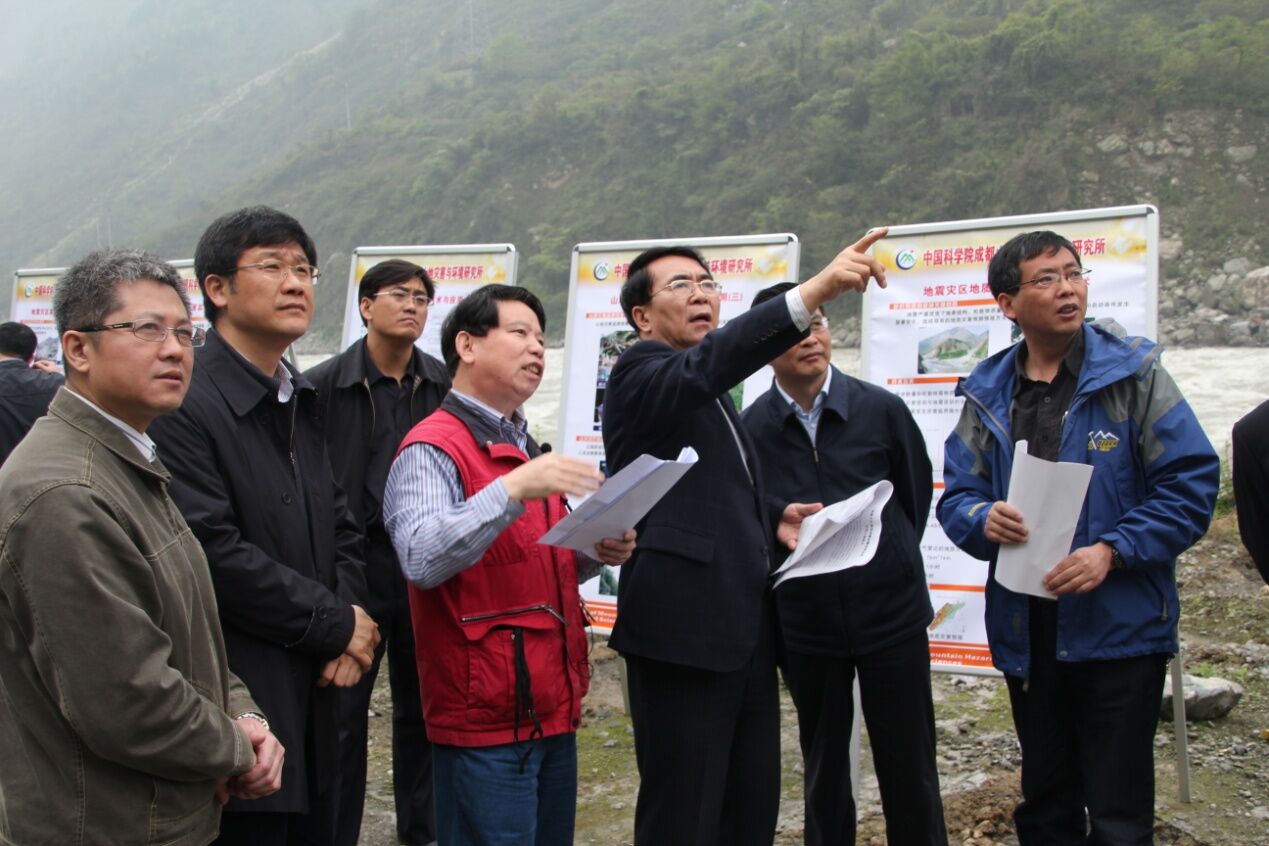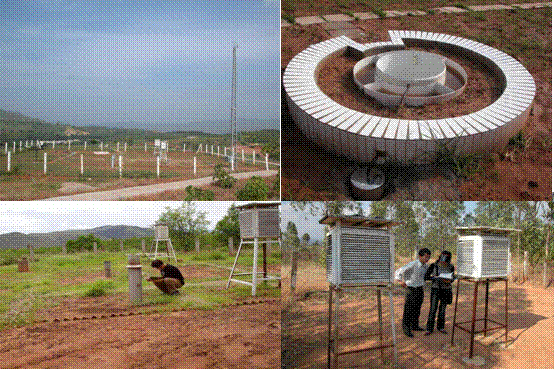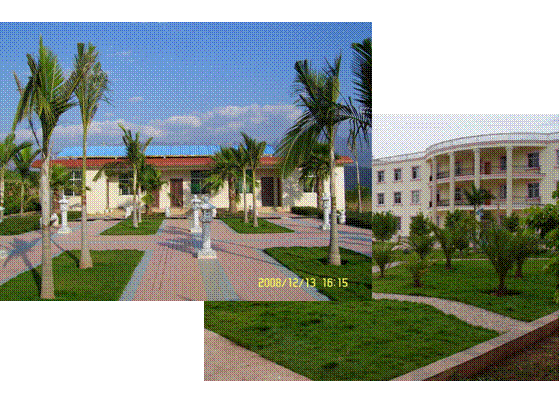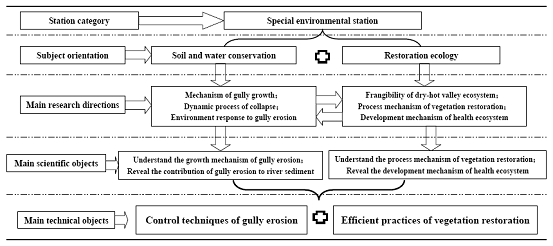| Multimedia |

|
| Location: Home > Field Observation Stations > Field Stations > Gully Erosion and Collapse Experimental Station inYuanmou Dry-Hot Valley |
| Gully Erosion and Collapse Experimental Station inYuanmou Dry-Hot Valley | TEXT SIZE: A A A |
|
Stationmaster:Gangcai Liu Location:Yuanmou county of Yunan province, China Telephone:0878-8352458
Yuanmou Gully erosion and collapse experimental station(Yuanmou station), is established both by Institute of Mountain Hazards and Environment, Chinese Academy of Sciences in Chengdu and Yunnan Academy of Agricultural Sciences for field observation and research. The station lies in Yuanmou dry-hot valley which is the representative area of southwest dry-hot valley, especially the Jinsha River dry-hot valley inChina. The station was located in Julin town, Yuanmoucity, Yunnan province, and was built in 1992. The area of experiment region is 40 ha, elevation is 1256m~1331m, and the average slope is around 35%. Yuanmou city lies in valley basin of Longchuan River downstream, which is the main tributary of Jinsha River in the north edge of Yunnan-Guizhou Plateau, and between the longitude 101º35' and 102º05' E and the latitude 25º25' and 26º07' N. It has a area of 202146 ha with the length of 77.25 km from south to north and width of 42.0 km from east to west. The elevation of country is 898m~2835.5m, height difference is very disparity, relative altitude is 1937.9m, so the vertical differentiation of ecological environment is obvious. The verticalecological environment is divided into dry-hot valley area (below 1350m), warm and hot Mid-Levels area (1350m~1700m), warm mountain area (1700~2000m), warm and cool high mountain area(2000m~2835.5m) 4 kinds of eco-environment from the valley to the summit. The solar and heat resources is abundant in Dry-hot valley(sunshine times per year is 2550~2744h, the percent of sunshine is 60%, annual average temperature is 21.5℃, average temperature of the hottest months is 27.1℃, extreme high temperature is 43℃, average temperature of the coldest months is 14.9℃, ultra low temperature is -2.1~0.1℃, the accumulated temperature of ≥10℃ is 7996℃, the frostless season is 350~365d. It is one of the valuable resources of hot area in Yunnan Province, even in the whole country, and also is one of the well-known bases for winter vegetable. But in dry-hot valley dam around the low mountain area, Annualprecipitation is 615.1 mm, the rainy season (June~October) precipitation accounts for 90% of the annual precipitation. Annual potential evaporation is 3569.2 mm, which is 5.8 times as much as the precipitation, obvious contradiction between water and heat. Intense disturbance of human activities, lower rate of vegetation coverage, serious soil erosion, broken terrain, ecological environmental degradation, poor people's living, all theseare one of the fragile typical ecological zones in China.
The experimental observation sites are distributed in two regions, total area covers 273.3 ha, among which 188.2 ha of land-use rights belong to the Institute of Tropical Ecology, Yunnan Academy of Agricultural Sciences. There are long-term meteorological observation station, runoff observationplots, and gully erosion and collapse measurement grounds in this experimental field. The experimental station, which lies on Shadi village, Yuanma town, Yuanmou city, has been built for more than 10 years. Furthermore, office and residential buildings are built in this area. The second site, lies on Jinlei Xiaoxin village, Julin town, Yuanmou city, has been established for 5 years and covers about 200 ha. This experimental ground is used to observe and study the reason and mechanism for gully erosion and collapse, and also the process of vegetation restoration. There is meteorological observation station, runoff observationplots of different vegetation restoration practices on slopped land, observation grounds for gully erosion and collapse, and for vegetation natural restoration, runoff observation weirs at the exit of gully base, as well as integrated observational plots, and so on in this station.
The area of working and living Garden is about 75 ha. There are two buildings with 2139m2used for office, 199m2 for multi-functions meeting-room, and 3100m2 for accommodation, as well as 200m2 for restaurant. Additionally, there are natatorium and basketball court in the garden.
Station has 20 permanent employees, among which 3 personnel are professors, 5 are associate professors, 12 are the other personnel, and about 10 commutative personnel who are mainly graduate students.
The Yuanmou Eco-experimental Station received researchers from UK, New Zealand, Germany, Japan, South Africa etc. to carry out field investigations and research. Moreover, it also conducted cooperative research with many scientific institutions as Forestry Research Institute of New Zealand, Exert University of UK, Tokyo University of Japan, Agricultural Environment Research Institute of Japan, etc. on soil erosion, vegetation restoration and land desertification.
Since the last fifty years, our research results indicated that the climate of plain section in the valley has evolved in a trend to favor human’s productive activities and resources utilization, due to the large scale of irrigation agriculture, the increase of rainfall, the decline on air temperature and the reduction on evaporation. These research results supply significant scientific support to the exploitative treatment on the degraded environment in Dry-hot Valley Region.
The comparison research of two chief rivers on sediment resources in the Upper Reaches of Yangtze shows that, since the 90s of last century, the sediment runoff has significantly declined due to the greater contribution from the re-vegetation projects and other control measurements on soil erosion in the region. However, the sediment runoff has consistently increased since the 80s of last century, because the increase of runoff production caused by the engineering construction there is by far greater than the decrease of that caused by the controlling measures of re-vegetation and treatment projects. The research result is of great significance to the decision-making and programming of key engineering projects. Lithological Composition is one of the key factors influencing soil water and re-vegetation in slopes in Dry-hot Valley Region. According to the litho logical compositions, the slopes were divided into 4 different types. And the capability of water infiltration is also one of the important factors which determinates the soil water conditions in slops, while the difference in soil porosity results with the different on the capability of water infiltration of different slope types. Therefore, the different capabilities of water infiltration determinate the soil water conditions and the distribution patters of vegetations in different slope types. On the basis of the above results, the responding re-vegetation models were established and also the relevant demonstration plots were founded. Currently, the research results has been accepted and demonstrated all through the Jinsha Dry-hot Valley Region.
(1) Pot- infiltrated and Water-saved Irrigation Technique: The technique belongs to underground irrigation style, which can efficiently protect soil structure, reduce the evaporation between crops and also can collect the rainfall which can be used as irrigation water during the seasonal drought. (2)Water-intercepted Wall Technique with Underground Plastic Film : The technique can be used not only in farmland, but also in fruit yards and re-vegetation work in barren mountains. Its principle is that by placing plastic film vertically around the crop roots underground, the runoff and interflow can be intercepted efficiently and then be utilized by crops, which has very significant benefit of water saving and thus can raise the crop or plant survival rate and contribute to crop yield increasing.
The overall scheme and objects of the station’s research direction are as following::
The station presently has three schemed research directions with its respective contents:
u types, growth features and development mechanism of gully; u dynamic mechanism of collapse; u coupling impact mechanism between gully erosion and collapse; u response of environment to gully erosion and collapse; u techniques and practices of controlling gully erosion and collapse;
u characteristics and mechanism of water recycle in dry-hot valley ecosystem; u scale response of gully erosion to environment u coupling influencing mechanism between gully erosion and vegetation restoration; u evolution characteristics and its mechanism of natural and artificial restoration ecosystem; u contracture-function features and its development mechanism of health ecosystem; u vegetation restoration practices of degraded ecosystem;
u response process and tolerance feature of vegetation to stress of water-hot; u interaction mechanism of water, hot and night during the period of vegetation growth; u highly efficient techniques and practices of utilizing water, hot and night for ecosystem; u suitability assessment of natural and artificial ecosystem; u Guide-lines and permissible action criterion of human activity in ecosystem and its management.
|




